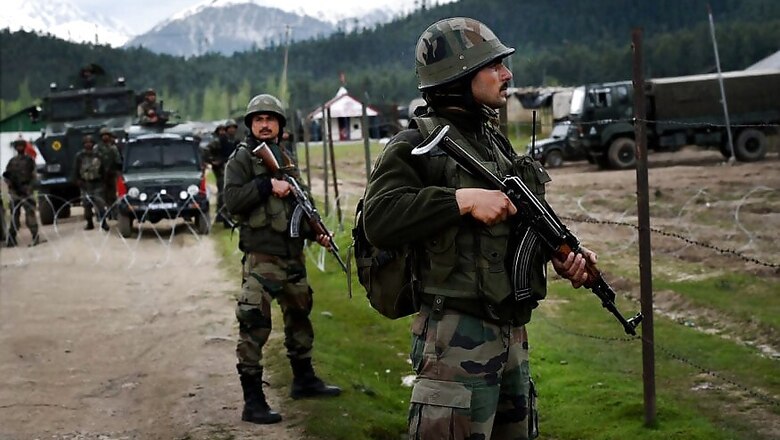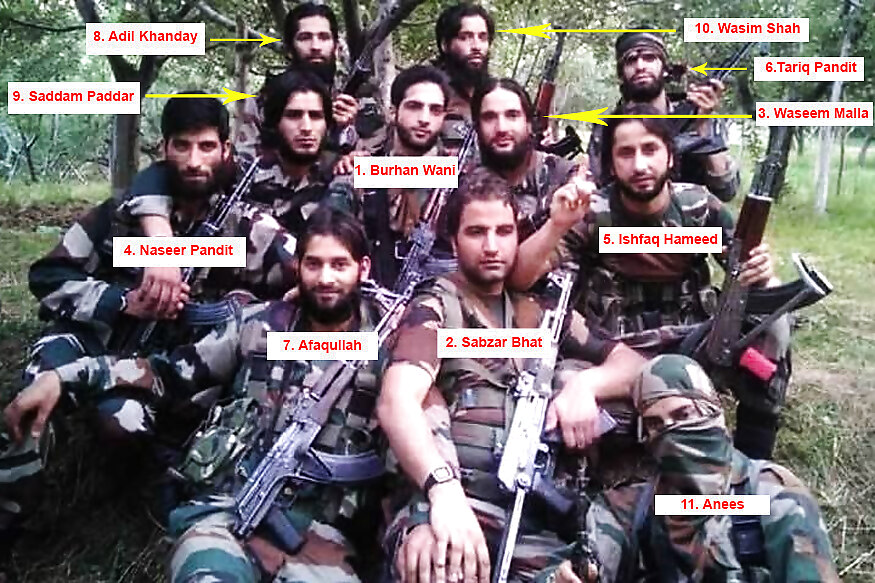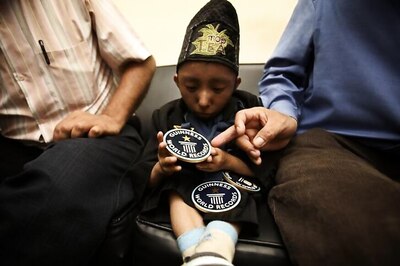
views
New Delhi: ‘Hizbul Commander Sabzar Ahmad Bhat gunned down in an encounter in Tral’: As the news spread like wildfire on May 27, and Kashmir plunged into yet another phase of uncertainty, select few people in New Delhi were unsurprised.
What may have appeared like a sudden encounter to some was part of a larger strategy to reach a “permanent solution” in Kashmir.
Exactly seven days later, the National Investigation Agency (NIA) went full throttle in Srinagar and Delhi, raiding houses and other establishments of Hurriyat leaders and their allies. The FIR registered by NIA was carefully, yet simply, worded.
“The Hurriyat was collaborating with Lashkar and Hizbul and raising blood money through hawala transactions to fund both gun totting militants and homegrown stone pelters in the valley,” read the four-page report.
Highly placed sources told CNN-News18 that the two incidents were not unrelated. They are, in fact, part of Prime Minister Narendra Modi’s three-point Kashmir plan.
“We have come up with a permanent solution to resolve issues in Kashmir. The initiative has begun and we are moving forward,” Home Minister Rajnath Singh had said a few weeks ago.
With Singh reiterating what happened, and cementing his government’s stamp of control on the problems in Kashmir, CNN-News18 delves into what exactly the “permanent solution” looks like.
HOT PURSUIT
If there’s anything that Modi and his men have made clear, it is that the priority is to eliminate and completely crush militancy. Sources told CNN-News18 that a list of active terrorists and militants in the valley has been drawn up, and their names are being crossed out, one by one. Sabzar was part of that list.

The Hizbul Mujahideen group photo.
Use of arms and ammunitions looks like the order of the day. Fifteen years on, the vilified Cordon and Search Operations are now back to Search and Clear Ops. The differentiation between a homegrown militant and a foreign terrorist no longer exists. The armed forces across the 778-km long Line of Control (LOC) have been launching preemptive strikes at Pakistan Army posts that are allegedly harboring and aiding infiltrators. The Army, just days ago, went to the extent of releasing a video of one such attack. The hunt is on, without any apologies.
FREEZE THE FUNDS
Separatists are being hit where it hurts. Money. The Centre is said to be treading on the path based on the alleged fact that dry fruit trade in Kashmir is what keeps the pockets of separatists full.
Nobody is clear about the amount of money involved, but estimates have pegged it at Rs 200-300 crore. A list of those involved in hawala transactions was drawn up two months ago. By linking these alleged hawala transactions to terror funding, the government has cleared the way for the NIA to breeze past the Income Tax department and hit the separatists directly.
“By ordering the NIA to clamp down on separatists, the government has made it clear that it is accusing the Hurriyat of ‘waging a war against India’. This money is allegedly used in organizing stone pelters and funding hubs of radicalization,” the source said, adding that the idea was to choke terror funds and push the separatists to a corner.
Though the BJP’s alliance with PDP, led by Chief Minister Mehbooba Mufti, has more than once advocated dialogue with the separatists, the Modi government has always replied in negative. If at all, Modi government wants dialogue from a position of strength, not weakness.
CUT INTO VIRTUAL SPACE
The power of the internet has the government worried. There are many within the valley who, by risking life and limb, shoot videos, click photographs and put them out on social media. Many have died in the process. The Internet has become a space with no boundaries for their call for ‘freedom’. And this is when the government stepped in. It has disconnected the valley from the Internet and social media.
“People were being mobilized in the valley via social media. Something had to be done. And it has worked,” the source said. Take a look at Sabzar’s funeral procession. “Only 3000 people turned up for his funeral because we snapped the Internet connection. We didn’t want a repeat of what happened at Burhan Wani’s funeral,” the source told CNN-News18.
WHAT HAPPENS TO PDP-BJP ALLIANCE?
The three-point plan for Kashmir is up and running. But the government has another problem at hand. “There is a resigned acceptance within the BJP government that CM Mehbooba Mufti is failing at many levels in controlling the turmoil in Kashmir,” the source said.
CNN-News18 had previously reported on how Mehbooba Mufti’s popularity had seen a constant downfall ever since Burhan Wani’s death last year. Mufti was also forced to withdraw from a public function after pro-Pakistan slogans were raised. But the government, the source added, has no option but to let the alliance continue.
“We are left with no alternative. Omar Abdullah was our first choice, but he didn’t want to work with us. So, why hold another election when we know we will be stuck with the same partner?” the source added.




















Comments
0 comment